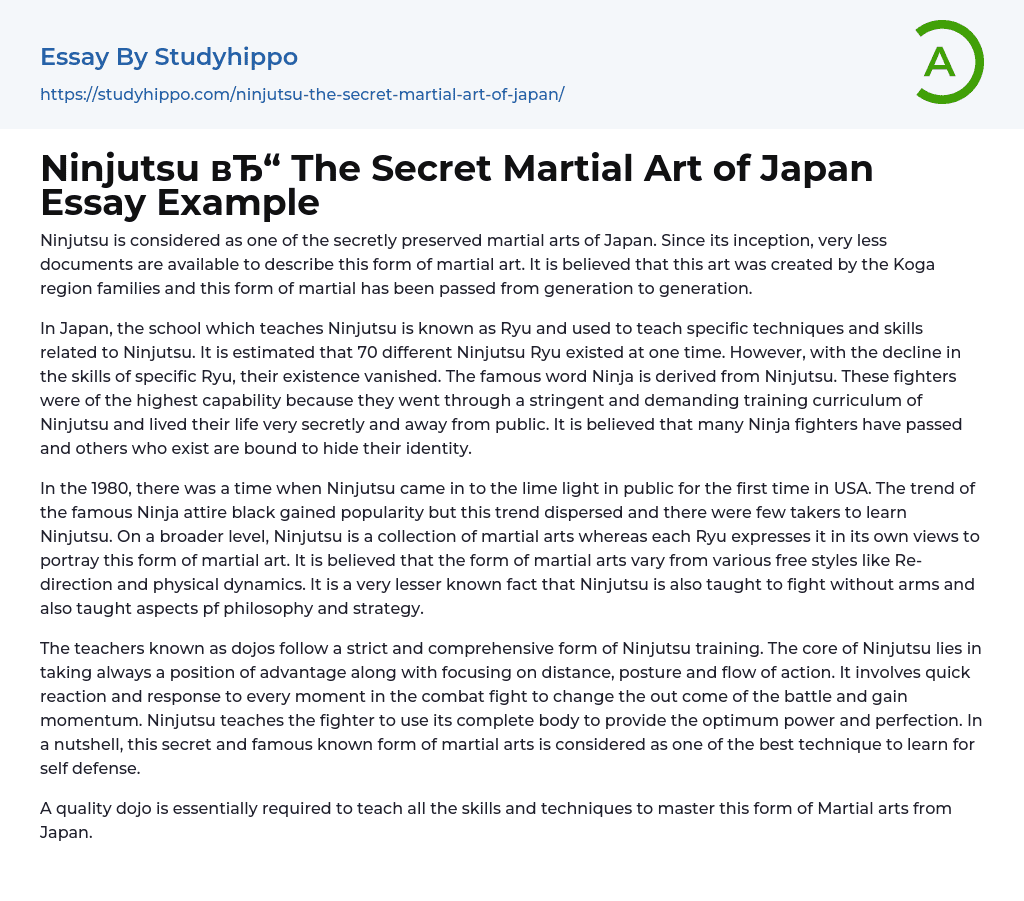The techniques of Ninjutsu, a martial art originating from Japan and kept secret since its creation, are not well-documented. It was developed by families in the Koga region and has been passed down through generations.
In Japan, Ninjutsu is taught in schools called Ryu, which train students in specific techniques and skills. Historically, there were approximately 70 different Ryu dedicated to Ninjutsu; however, many of them have disappeared due to a decline in skills. The term “Ninja” originates from Ninjutsu, and Ninja fighters were highly skilled due to rigorous and secretive training. It is suggested that many Ninja have passed away, while others still exist but conceal their identities.
During the 1980s in the United States, Ninjutsu gained public attention for the first time. This martial art form brought the famous black Ninja attire into trend, but ulti
...mately, only a few individuals were interested in learning Ninjutsu. Although Ninjutsu consists of a collection of martial arts, each Ryu expresses it in its unique way to showcase this form of fighting. There is a belief that martial art forms vary from different free styles like Re-direction and physical dynamics. An interesting fact is that Ninjutsu is also taught as a means to fight without using weapons, as well as incorporating aspects of philosophy and strategy into the teachings.
Dojos, who are instructors of Ninjutsu, teach a comprehensive and rigorous training regimen. This martial art emphasizes maintaining an advantageous position, as well as paying attention to distance, posture, and the flow of action. The key is swift responses and reactions during combat to change the outcome of the battle and gain momentum; this teaches practitioners to use their entire bod
for maximum power and perfection. Ultimately, Ninjutsu is a highly effective technique for self-defense that is widely known yet still shrouded in secrecy.
It is vital to have a high-quality dojo that teaches all the necessary skills and techniques in order to become a master in Japanese Martial Arts.
- Creativity essays
- Art History essays
- Theatre essays
- Pastoral essays
- Visual Arts essays
- Postmodernism essays
- Symbolism essays
- ballet essays
- Color essays
- Modernism essays
- Mona Lisa essays
- Work of art essays
- Body Art essays
- Artist essays
- Cultural Anthropology essays
- Ethnography essays
- Aesthetics essays
- Realism essays
- Heritage essays
- Harlem Renaissance essays
- Concert Review essays
- Voice essays
- Theatre Of The Absurd essays
- Playwright essays
- Scotland essays
- Tennessee williams essays
- Design essays
- Graffiti essays
- Graphic essays
- Typography essays
- Painting essays
- Photography essays
- Sculpture essays
- Architecture essays
- Interior design essays
- Arch essays
- Area essays
- Tattoo essays
- Pablo Picasso essays
- Vincent Van Gogh essays
- Michelangelo essays
- Frida Kahlo essays
- Academia essays
- Higher Education essays
- Language Learning essays
- Studying Business essays
- Education System essays
- Study essays
- First Day of School essays
- Scholarship essays




